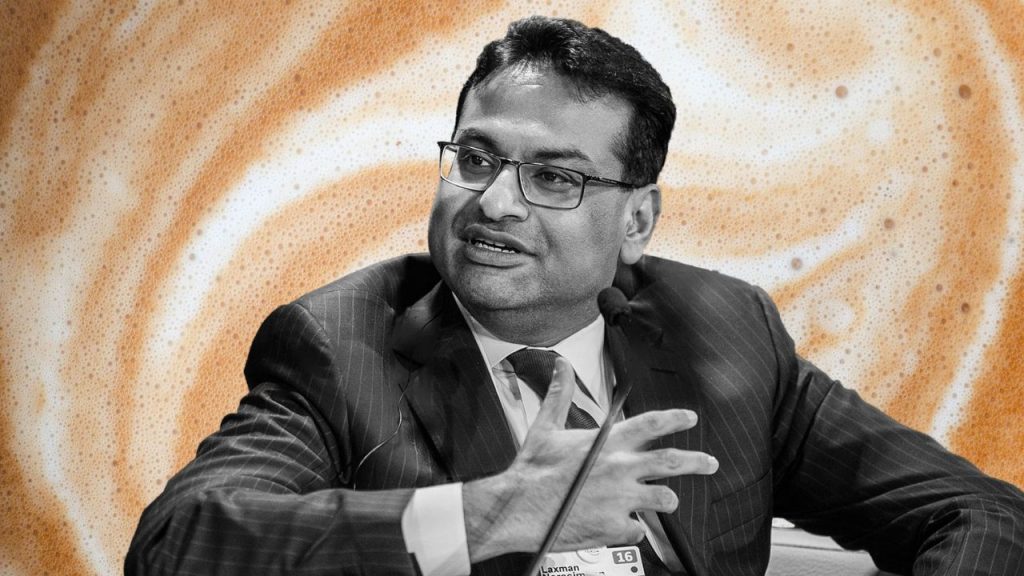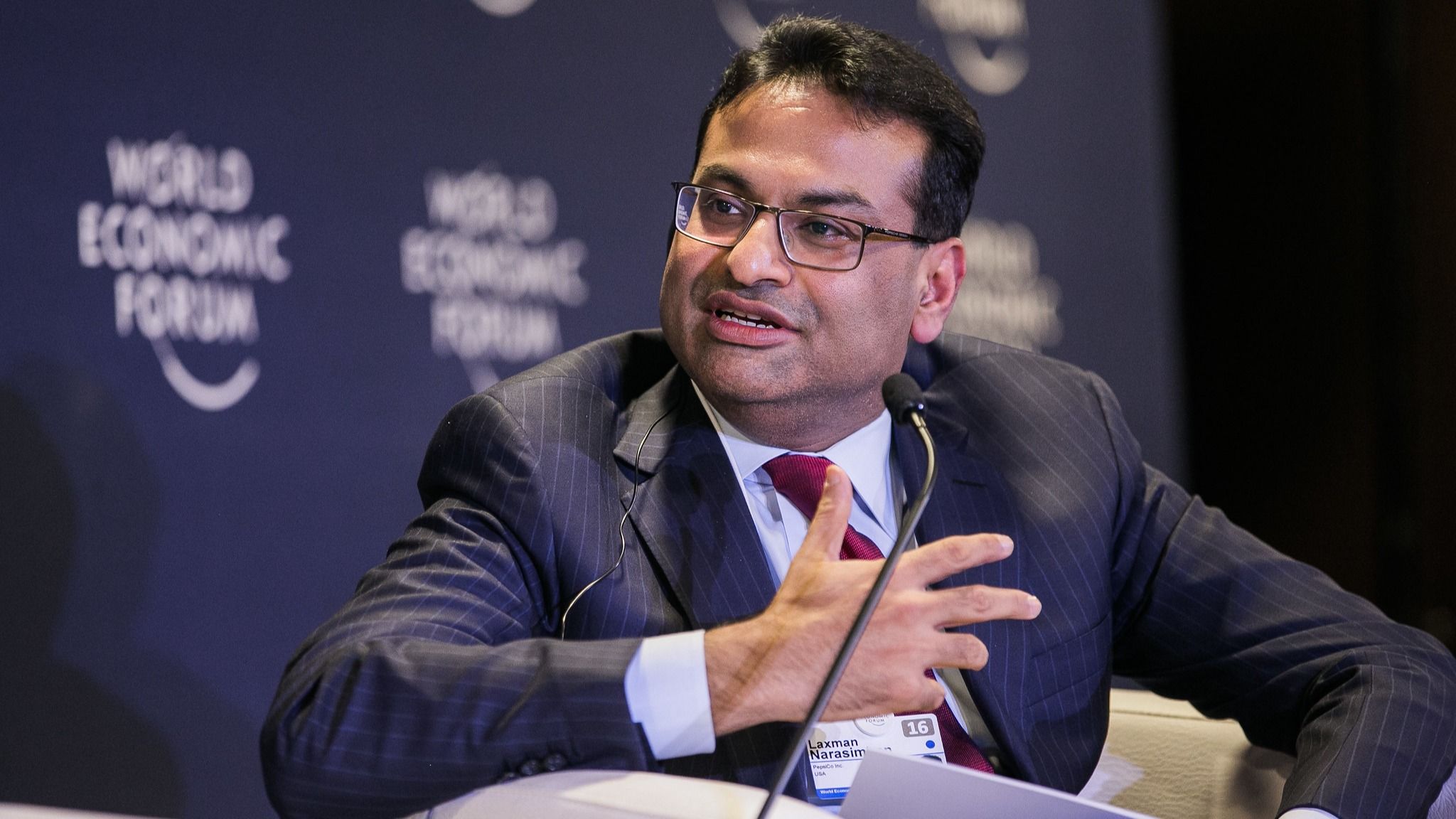Laxman Narasimhan’s Career Journey

Laxman Narasimhan’s career journey is marked by a series of strategic leadership roles across diverse industries, demonstrating his adaptability and expertise in driving growth and innovation. He has held key positions at prominent multinational companies like PepsiCo, Reckitt Benckiser, and Starbucks, showcasing his ability to navigate complex business environments and deliver impactful results.
Leadership at PepsiCo
Narasimhan’s career began at PepsiCo in 1999, where he held various roles within the company’s global beverage and food divisions. He rose through the ranks, demonstrating his ability to manage complex operations and develop strategic initiatives. He played a pivotal role in developing and executing PepsiCo’s global strategy for emerging markets, which significantly contributed to the company’s expansion and revenue growth.
Leadership at Reckitt Benckiser
In 2012, Narasimhan joined Reckitt Benckiser, a global consumer goods company, as the CEO of its global health division. He led the division through a period of significant transformation, focusing on innovation, product development, and strategic acquisitions. Narasimhan’s leadership at Reckitt Benckiser was marked by a focus on operational efficiency and a commitment to delivering sustainable growth.
Leadership at Starbucks
Narasimhan joined Starbucks in 2019 as the Chief Operating Officer, overseeing the company’s global operations. He played a key role in implementing Starbucks’ digital transformation strategy, expanding its mobile ordering and delivery services. He also spearheaded the company’s efforts to improve its customer experience and enhance its brand image. In 2022, he was appointed CEO, tasked with leading the company through a period of rapid growth and expansion.
Starbucks Leadership and Strategy under Narasimhan
/shethepeople/media/media_files/R52oQKHWHlkwHmejoAEK.png)
Laxman Narasimhan, appointed as Starbucks CEO in October 2022, has inherited a company with a rich history and a strong brand identity. However, the company faces significant challenges, including declining customer satisfaction, rising labor costs, and intense competition in the coffee market. Narasimhan’s leadership and strategic initiatives aim to address these challenges and position Starbucks for future growth.
Key Strategic Initiatives
Narasimhan’s strategy for Starbucks can be summarized as a three-pronged approach: operational excellence, customer experience, and innovation. This approach aims to streamline operations, enhance the customer experience, and introduce new products and services to drive growth.
- Operational Excellence: Narasimhan has emphasized cost control and efficiency improvements across the organization. This includes streamlining supply chains, optimizing store operations, and leveraging technology to enhance productivity.
- Customer Experience: Starbucks is investing in enhancing the customer experience through initiatives like personalized offerings, improved digital ordering and payment systems, and a renewed focus on customer service. The company is also experimenting with new store formats and concepts to cater to evolving customer preferences.
- Innovation: Starbucks is exploring new product categories and partnerships to drive growth. This includes expanding its food offerings, introducing new beverage options, and exploring new market segments. For example, the company is exploring the potential of the plant-based milk market and is partnering with other brands to offer new products and services.
Impact of Initiatives
Narasimhan’s strategic initiatives have had a mixed impact on Starbucks.
- Financial Performance: While Starbucks has reported strong financial results since Narasimhan took over, it is difficult to attribute these results solely to his initiatives. The company’s financial performance has been impacted by various factors, including inflation, supply chain disruptions, and consumer spending patterns. However, Narasimhan’s focus on cost control and efficiency improvements has contributed to the company’s profitability.
- Customer Experience: The impact of Narasimhan’s initiatives on customer experience is still evolving. Some customers have praised the company’s efforts to enhance the digital ordering experience and personalize offerings. However, others have expressed concerns about rising prices and perceived reductions in customer service.
- Employee Morale: Narasimhan has faced challenges in addressing employee concerns about wages and working conditions. Starbucks has faced criticism for its handling of unionization efforts and its response to employee protests. While the company has taken steps to address these concerns, it remains a significant challenge for Narasimhan.
Comparison with Howard Schultz
Narasimhan’s approach to Starbucks is distinct from that of his predecessor, Howard Schultz. Schultz, known for his visionary leadership and focus on creating a “third place” experience, was more focused on building a strong brand identity and fostering a unique customer experience. Narasimhan, on the other hand, is taking a more data-driven and operational approach, emphasizing cost control, efficiency, and innovation.
- Emphasis on Operations: While Schultz emphasized the customer experience and brand building, Narasimhan is focusing on operational excellence and efficiency. This approach reflects a shift in the company’s priorities, moving away from a purely customer-centric approach to one that emphasizes financial performance and sustainability.
- Data-Driven Approach: Narasimhan is taking a more data-driven approach to decision-making, leveraging analytics and insights to inform strategic initiatives. This contrasts with Schultz’s more intuitive and visionary leadership style.
- Innovation and Expansion: While Schultz focused on expanding Starbucks’ global footprint and introducing new products, Narasimhan is emphasizing innovation in a broader sense. This includes exploring new market segments, developing new product categories, and leveraging technology to enhance the customer experience.
Challenges and Opportunities for Starbucks in the Future

Starbucks, despite its global dominance, faces a complex and dynamic landscape in the coming years. The company’s success will depend on its ability to navigate evolving consumer preferences, fierce competition, and economic uncertainty.
Challenges Facing Starbucks
Starbucks faces a number of significant challenges, including:
- Intensifying Competition: The coffee industry is increasingly crowded, with new entrants and established players vying for market share. Starbucks faces competition from specialty coffee shops, fast-food chains offering coffee, and online retailers selling coffee beans and brewing equipment. This competition puts pressure on Starbucks to maintain its brand image, innovate with new products and services, and offer competitive pricing.
- Changing Consumer Preferences: Consumer preferences are constantly evolving, driven by factors such as health consciousness, sustainability concerns, and the desire for personalized experiences. Starbucks needs to adapt its offerings to meet these changing demands. For example, consumers are increasingly seeking plant-based alternatives to dairy milk, and Starbucks has responded with the introduction of oat milk and other plant-based options.
- Economic Uncertainty: Global economic uncertainty, including inflation and potential recessions, can impact consumer spending on discretionary items like coffee. Starbucks needs to be mindful of pricing strategies and ensure its products remain accessible to a wide range of consumers.
- Technological Advancements: The rapid evolution of technology presents both opportunities and challenges. The rise of mobile ordering and payment platforms, as well as delivery services, has transformed customer expectations. Starbucks needs to adapt its technology infrastructure and customer service to meet these demands.
Opportunities for Starbucks, Laxman narasimhan
Despite the challenges, Starbucks also has significant opportunities for growth and expansion. These opportunities include:
- Expanding into Emerging Markets: Starbucks has a strong presence in developed markets, but there is significant potential for growth in emerging markets with a growing middle class and increasing demand for coffee. The company can leverage its brand recognition and expertise to establish a foothold in these markets. For example, Starbucks has been expanding its presence in China, a market with a large and growing coffee-drinking population.
- Developing Innovative Products and Services: Starbucks can continue to innovate with new products and services that cater to evolving consumer preferences. For example, the company has introduced plant-based milk options, cold brew coffee, and personalized coffee experiences through its mobile app.
- Leveraging Technology: Starbucks can leverage technology to enhance the customer experience, improve operational efficiency, and personalize offerings. The company can invest in mobile ordering and payment platforms, delivery services, and data analytics to better understand customer needs and preferences.
- Focus on Sustainability: Consumers are increasingly interested in sustainable products and practices. Starbucks can further strengthen its commitment to sustainability by sourcing ethically sourced coffee beans, reducing its environmental footprint, and promoting responsible waste management.
Potential Future Strategies for Starbucks
| Challenge | Opportunity | Potential Strategy |
|---|---|---|
| Intensifying Competition | Expanding into Emerging Markets | Develop targeted marketing campaigns to appeal to consumers in emerging markets. Offer localized products and services to cater to local tastes and preferences. |
| Changing Consumer Preferences | Developing Innovative Products and Services | Continue to introduce new plant-based milk options, cold brew coffee, and other innovative beverages. Explore partnerships with food and beverage companies to offer unique and limited-edition products. |
| Economic Uncertainty | Leveraging Technology | Invest in mobile ordering and payment platforms to provide a seamless and convenient customer experience. Optimize pricing strategies to ensure affordability while maintaining profitability. |
| Technological Advancements | Focus on Sustainability | Implement sustainable sourcing practices for coffee beans and other ingredients. Reduce waste and energy consumption across its operations. Promote responsible waste management practices. |
Laxman Narasimhan, the new CEO of Starbucks, is facing a steep uphill battle to restore the company’s image after years of controversy. His challenge is reminiscent of the situation faced by Brian Nichols, a former Georgia prison guard who was acquitted of murder charges after a shocking case of courthouse violence.
brian nichols case, though unrelated to business, underscores the importance of public perception and the need for a strong and decisive leader to navigate complex challenges. Narasimhan will need to leverage his experience and leadership skills to address the issues facing Starbucks and regain the trust of its customers and employees.
Laxman Narasimhan, a seasoned executive with a global perspective, is the current CEO of Starbucks, leading the coffee giant into a new era. Narasimhan’s strategic vision, honed through years of experience at PepsiCo and Reckitt Benckiser, is evident in his focus on innovation, customer experience, and sustainability.
As ceo laxman narasimhan , he is navigating the company through a rapidly evolving landscape, ensuring Starbucks remains a global leader in the coffee industry. Narasimhan’s leadership is characterized by a commitment to long-term growth and a focus on building a more inclusive and sustainable future for the company and its stakeholders.
